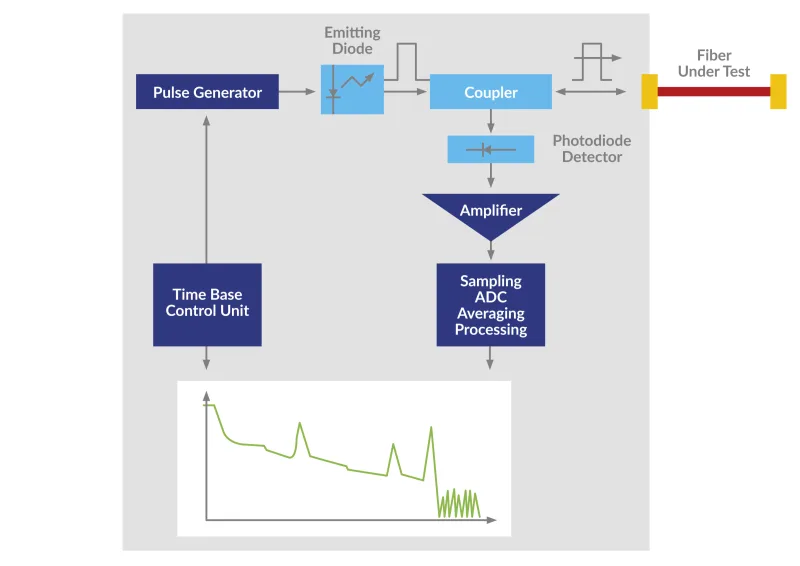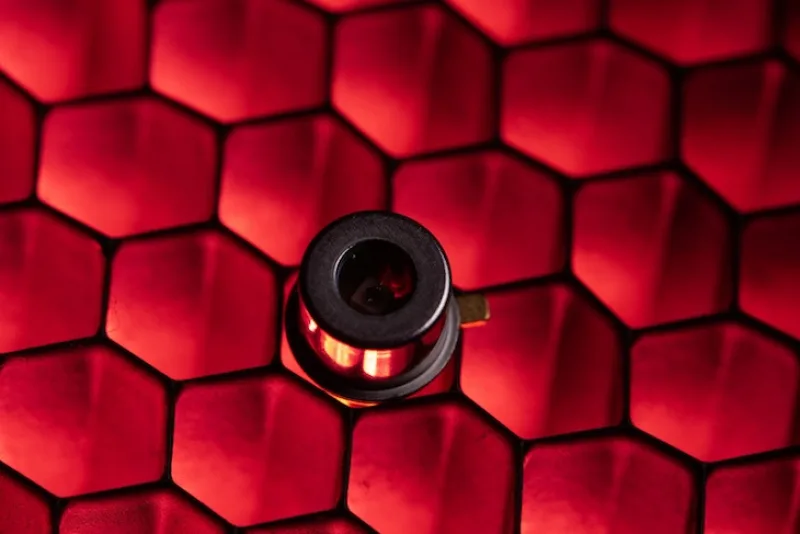OTDR’s get performance boost from antimony powered avalanche diodes
An Optical Time-Domain Reflectometer (OTDR) measures optical fibre characteristics and detects faults, sometimes over vast distances. It fires infrared pulses along the fibre-under-test and measures what comes back. A laser diode is the transmitter and an avalanche photodiode (APD) is the sensor that receives the reflected signal.

Instruments used with single-mode fibres usually run at 1310 nm and/or 1550 nm IR wavelengths. For a given laser power, the sensitivity of the APD is the main determinant of the instrument’s range, which can be 200 km or more.
Dead zones, or event blind areas, can be a problem because the instrument might think that two faults close together are just one. The problem is mitigated if the APD’s recovery time is short.
Why Indium Gallium Arsenide (InGaAs) APDs are used as OTDR sensors.
For wavelengths from 1100 nm to 1700 nm, where optical fibres have low absorption and dispersion, APDs based on germanium or indium gallium arsenide (InGaAs) can be used. InGaAs APDs exhibit lower noise and higher detection bandwidth than germanium devices, so have become the de-facto choice for OTDR applications.
Nevertheless, the maximum gain to which they can be set is normally only between 10 and 40 before the amplified noise becomes problematic for the transimpedance amplifier (TIA) that follows the APD. The TIA is a signal conditioning circuit that then feeds into an analogue-to-digital converter to enable digital signal processing. The test results are displayed on the OTDR screen.

Why a “noiseless” InGaAs APD?
After much research at the University of Sheffield, a new class of InGaAs APD technology was recently announced. Phlux defines "noiseless" APDs as those with an excess noise factor low enough to achieve an APD gain of over 100 without signal-to-noise (SNR) degradation, and the new devices come into this category.
Antinomy alloys are added to the compound semiconductor manufacturing process, resulting in photodetectors with 12X higher sensitivity than traditional parts. Called Aura APDs, they’ll work with an internal gain of over 120 and have fast overload recovery to minimize dead zone problems. They also exhibit ten times lower temperature drift than parts without antinomy and are stable at high temperatures. Dropping one of these diodes in an OTDR to replace the existing sensor gives an instant boost to both range and accuracy.
Find out more about the technology here.